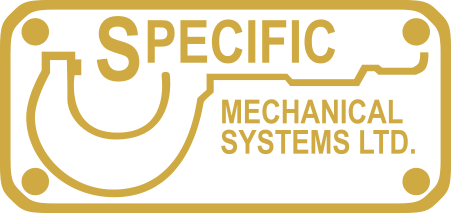Building Requirements
Plan. Design. Build. Brew.
Your dream is becoming a reality and you’re ready to design and build your brewery. Here are a few important design considerations to accommodate your brewing system.
Water
- Main water supply to your brewery is recommended to be 60 psi @ 25 – 30 GPM. Uniform water flow to the brewhouse is critical and should not be affected by water demand elsewhere in the building.
- Hot and cold hose bibs are required in all brewery spaces and lab areas.
- If kegging or bottling will be done, a water supply will be needed in these areas.
- Filtration may be necessary for city water. A water analysis will determine if a filter is required.
Finish
- Brewery floors should be sealed and resistant to both mild acids and strong alkalines.
- Due to the nature of the brewing process, walls and ceilings should be washable.
Square Footage
The following guidelines may be applied as general specifications.
- Brewpub size: 3 and 5 Barrel Systems = 300 to 500 square feet
- Brewpub size: 7, 10, and 15 Barrel Systems = 550 to 1200 square feet
- 20 Barrel brewhouses and larger can vary greatly. We can discuss a design to meet your business model and building.
Venting
- Typically, a flue is needed to vent the steam from the kettle.
- If a steam heated brewhouse is selected, an exhaust flue is required in the boiler room for a gas-fired boiler.
- If a direct gas-fired kettle is selected, an exhaust flue will also be needed for the kettle firebox.
- Make-up air is required in the boiler room on a steam heated system and in the brewhouse area for a direct gas-fired kettle.
Drainage
- Drains are required in the brewhouse, fermentation, walk-in cooler (if applicable), boiler room, and any other area where water and spillage may occur (e.g. kegging/bottling).
- Floors should have a recommended pitch of ¼” per foot towards drains.
- We recommend channel drains with stainless steel or fiberglass grating. All drains should be sized adequately to handle 4-6 barrels of effluent for every 1 barrel of beer produced.
Electrical
Note: These electrical guidelines are for planning purposes only. Complete detailed electrical requirements will be issued with the purchase of a brewing system from Specific Mechanical.
- Standard electrical for our equipment is 208VAC, 3 phase, 60 hertz, 4 wire.
- A 200 Amp service is generally acceptable for the brewery, but may be affected based on customer power supply and equipment scope.
- We can adapt the electrical design of our equipment to suit your needs. We can discuss the requirements prior to finalizing a design.
Ceiling Heights
- For planning purposes, smaller systems of 5 to 10 barrels should consider ceiling heights of 12′ to 15′ in the brewhouse and cellar areas. Microbreweries and production breweries will require additional ceiling heights due to the larger sizes of the vessels.
- We can design and fabricate our vessels to custom sizes based on your building requirements.
Additional Requirements
- For unloading and installation purposes, a forklift should be on site when the brewing equipment arrives. Forks should be extendable and padded to protect the equipment. The equipment will typically arrive in an enclosed 53′ trailer, standing up and lagged to the floor, or lying down on skids.
- If a walk-in cooler is required, we recommend that it is set up and prepared for equipment prior to equipment arrival.
- All electrical conduits and wiring are to be run and ready to connect to equipment.
- All drains, plumbing and water lines are prepared to accept brewing equipment.
- If natural gas lines are required, they should be run to the appropriate locations in the brewery.
- Ensure there is an entryway into the building to accommodate the largest vessel.
Quality Craftsmanship
Made In North America. Delivered Worldwide.
Supported Forever.
Supported Forever.

